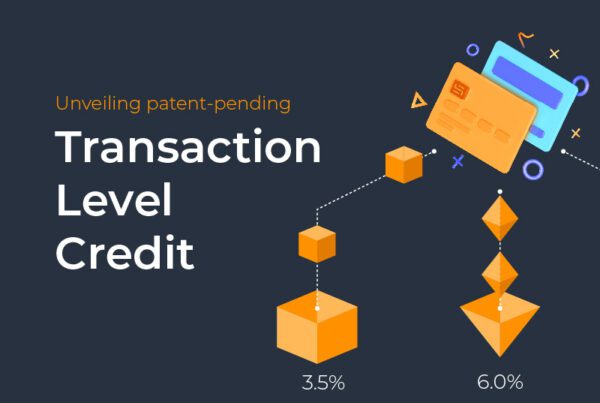Anybody can be a lender.
If you sell something, chances are people pay for it with a credit card. They’re already getting a loan—just not from you. So if they’re willing to buy on credit, why don’t you extend it to them directly, making a profit off interest and drawing in customers with more flexible purchase options?
We’ve seen firsthand the amazing things companies can do when they introduce lending into their business, from raising their bottom line to expanding their clientele into new markets, and we want to share the key lessons we’ve learned from their success.
It really boils down to two things:
- A financing-friendly product
- A modern lending platform
Financing-Friendly Products
If someone walks into a store, buys something for two dollars, and never comes back, there’s no point offering them financing—your interest of fifteen cents wouldn’t cover the effort of collecting it. To get into financing, you need a good or service that costs at least as much as the smallest loans. Borrowers take out small-dollar loans for as little as $100, so that’s a good starting point: If a customer will pay you $100 (either for one purchase or many), consider offering them financing options.
Installment Loans. Consider hotels, who typically require payment when you book your room. They could break that down into smaller, more digestible pieces, like a BNPL loan. The guest makes two or three payments before their stay, and pays the remaining balance afterward.
Or what about an auto repair shop? Not only could they make repairs more manageable by offering installment plans, but they could also boost returning business by bundling the payments with regular tune-ups and servicing.
Lines of Credit. Even companies that don’t sell big-ticket items, like restaurants or grocery stores, can finance their customers’ purchases as running lines of credit. They could launch an in-house credit card, either with a physical card issued to customers or just an internal record of what each shopper is spending.
We’ve seen lawyers, construction contractors, and other businesses that charge by the hour incorporate a line of credit into their billing. And instead of just tallying hours and charging a total at the end of the job, a line of credit adds interest to the equation. This gives the proper financial weight to the delay between hours worked at the beginning of the job and the payment that only comes at the end, encouraging their customers to make payments as they go.
Hybrids. There are of course companies that sell larger items but also rely on smaller, recurring purchases. With the right lending platform, these businesses could offer both installment loans and lines of credit, giving buyers flexibility in how they make payments and encouraging them to become repeat customers.
Some retailers, like clothing stores, already offer a credit card, but customers might hesitate to use them for major purchases, like back-to-school shopping. Why not let the customer make a purchase on their card and then roll part of the balance into a more predictable installment loan? Customers are attracted to the convenience and control over their balance, and the company starts earning interest where they previously had none.
This strategy would work perfectly for hobby stores, like a music shop. A customer could take out an in-store installment loan to buy the essentials of a guitar, amp, and cables, and then use a line of credit to buy new strings, songbooks, and effects pedals—and just like that, creative financing options have turned a one-time customer into repeat businesses.
Unconventional pivots. Even if you don’t have a perfect product lined up for customers, you might still be able to pivot into lending, opening up a new revenue stream. Consider rideshare companies. They have a golden opportunity with their drivers. Why doesn’t Lyft or Uber offer them auto loans, taking payments from a portion of each ride? They could even leverage their review data to help existing drivers know when to make repairs or upgrades. If a driver’s rating drops each summer as riders complain about the heat, the company could finance a tune-up on the AC or even a switch to a newer model.
And any company that works with contractors could apply the same strategy, opening up new opportunities and introducing new revenue streams.
A Modern Lending Platform
The limiting factor for many companies who want to get into lending is technology. Small town mom-and-pop stores might be able to keep a running tab for their regulars, but managing interest-bearing accounts for ten of thousands of customers would be next to impossible without a modern lending platform. In the past decade, we’ve seen technology open the doors for greenfield lenders, allowing them to create scalable and profitable credit products.
Core systems. Lending in any meaningful sense involves a simply staggering amount of math and management as you handle interest, fees, and other calculations for an entire portfolio. Handling that information requires a core system that not only has accurate calculations, but can also scale up to perform those calculations on hundreds of thousands of accounts. It also needs tools to sort and group those accounts,
Unfortunately, many lending cores lack that capability. Some deliver inaccurate numbers, and others just can’t manage more than a few thousand accounts—they’ll work fine for a fledgling portfolio, but cracks appear when you start to grow. Right when you’re poised for exponential growth, you have to backpedal and find a new core.
Get-Your-Money-Back Tools. A good core is a necessity, but it can’t do the job on its own. It’s actually relatively easy to give money or goods out to strangers; getting paid back is the tricky part. There’s a whole slew of tools designed to help manage loans and encourage borrowers to pay you back, but if you’re new to lending, let’s start with the broad categories.
- Origination —As you consider each applicant, you can use origination tools to learn how much risk you’re taking on by lending to them. Everyone’s familiar with credit scores, but there are also tools that can get you more information, like a borrower’s bank account history or even social media activity. But remember, this information is only valuable if you can organize and use it. We recommend storing that data in your lending core and using it as a single source of truth among all your systems.
- Servicing — Servicing is how you handle most problems that come up throughout the lifecycle of a loan, everything from questions about due dates to a borrower passing away. Handling these situations well can improve your customer experience, keeping borrowers engaged and current on their payments, but it requires a lot of work. Thankfully, the best credit platforms enable you to automate many servicing tasks, achieving that same level of customer satisfaction with a fraction of the human input.
- Collections — Collections are the direct efforts you make to get borrowers to make payments. Communication is essential here. Whether you’re sending emails, calling borrowers, or notifying them through a smartphone app, keeping them in the loop about due dates and grace periods will keep your money flowing back to you. The best platforms have both built-in communication tools and options to integrate your own.
- Payments — Finally, payments. Even if you carefully vet customers, keep them happy, and remind them about payments, they might still miss a due date if you’re missing the technical flexibility to accept payments how they want to give them. Some borrowers prefer using a debit card, but others like to pay it directly from their bank account, like a direct deposit. Either way, you should make sure your system has a flexible system for automatic payments, giving borrowers options to pay you back how they want. Even if you don’t have storefronts that can accept cash payments yourself, there are partners who can accept cash payments around the country and then send the money to you electronically.
Conclusion
If you’ve got a financing-friendly product, you should be looking into lending. (Honestly, even if you don’t have one, you should be looking into ways you could pivot.) With the growing demand for buying on credit, the financing industry is fertile ground for newcomers, offering countless businesses a tool to expand revenue, delight their customers, and open up new opportunities.
If we’ve piqued your interest, let us know. We’d love to talk about your plans to shake up your strategy with financing.



